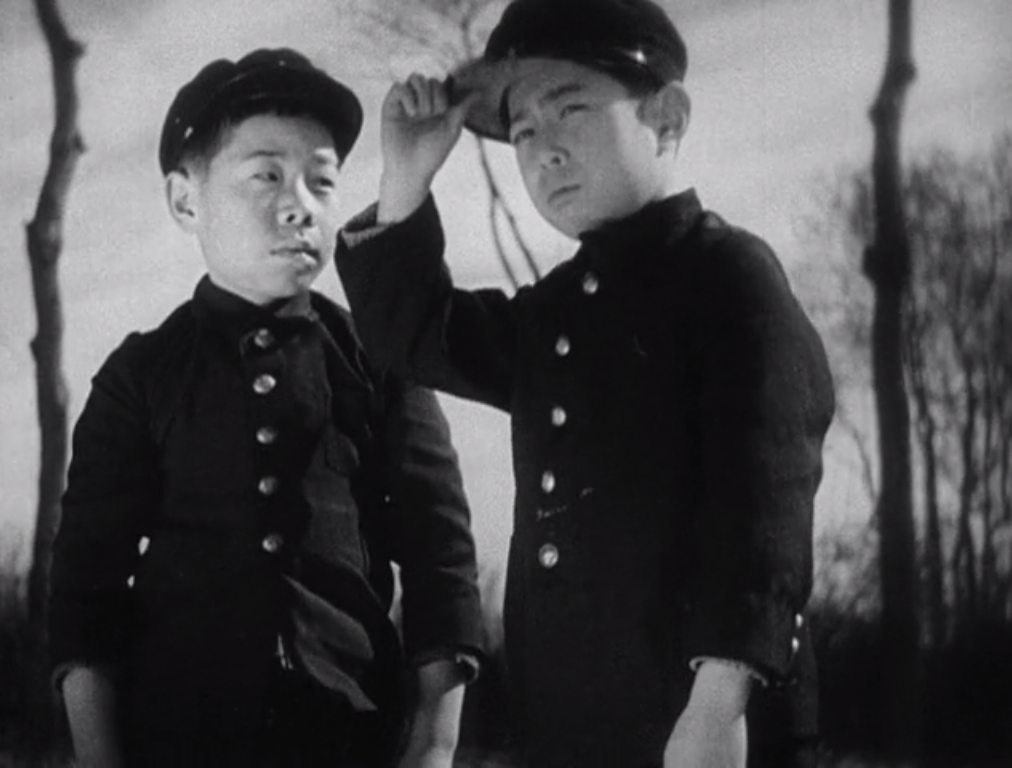
I Was Born, But…
1932, directed by Yasujiro Ozu
A middle-class family moves to the suburbs to improve their lives and, according to rumor, to be closer to the man’s high-powered boss. The situation is rife with possible complications, but we needn’t wait for the first glitch to occur because in the very first shot of I Was Born, But… a wheel on the family’s moving truck has gotten stuck in a rut. Like so many films whose opening encapsulates the story ahead, this introduction should prepare us to notice that all of the plot’s difficulties will be caused by circles.
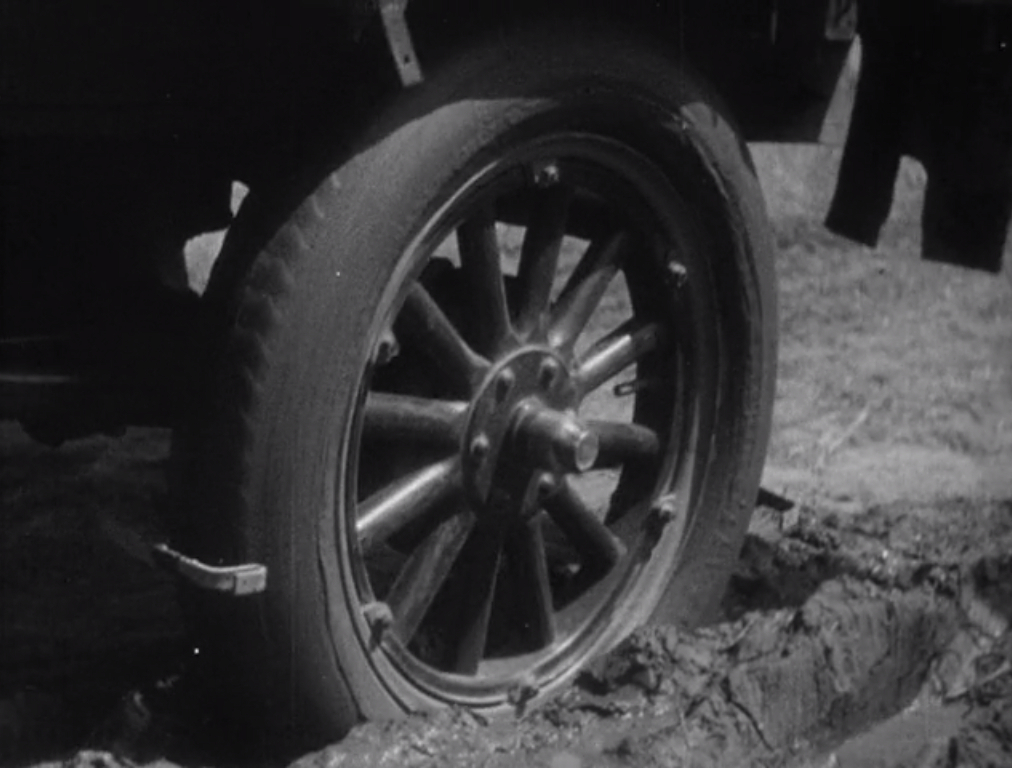
After that wheel spinning in the mud, the next prominent circles are the two wheels of the liquor store delivery boy’s bicycle. While the family unpacks, this teenager meets the family’s younger son Keiji at the door, making the boy cry when he knocks him across the head in a juvenile show of superiority. To calm Keiji (and to keep the family as prospective customers), the delivery boy lets him keep the toy he was showing, a puzzle made of three metal rings of different sizes linked on a chain that can be taken apart by some trick. These interlocking circles will, of course, lead to the next problem.
As Keiji plays with the puzzle in a vacant lot, throwing it down in frustration then picking it up again, the local gang of schoolboys finds him, smacks him around, and steals the toy. Keiji then runs for his brother Ryoichi, who happens to be playing with another toy, a sort of handle tied to a ball. Again the circle on the toy forecasts trouble ahead, and Ryoichi now gets involved in the spat, defending his brother and getting pushed around by the gang’s leader. This quarrel subsequently keeps the boys from attending school, which gets them into trouble with their father.
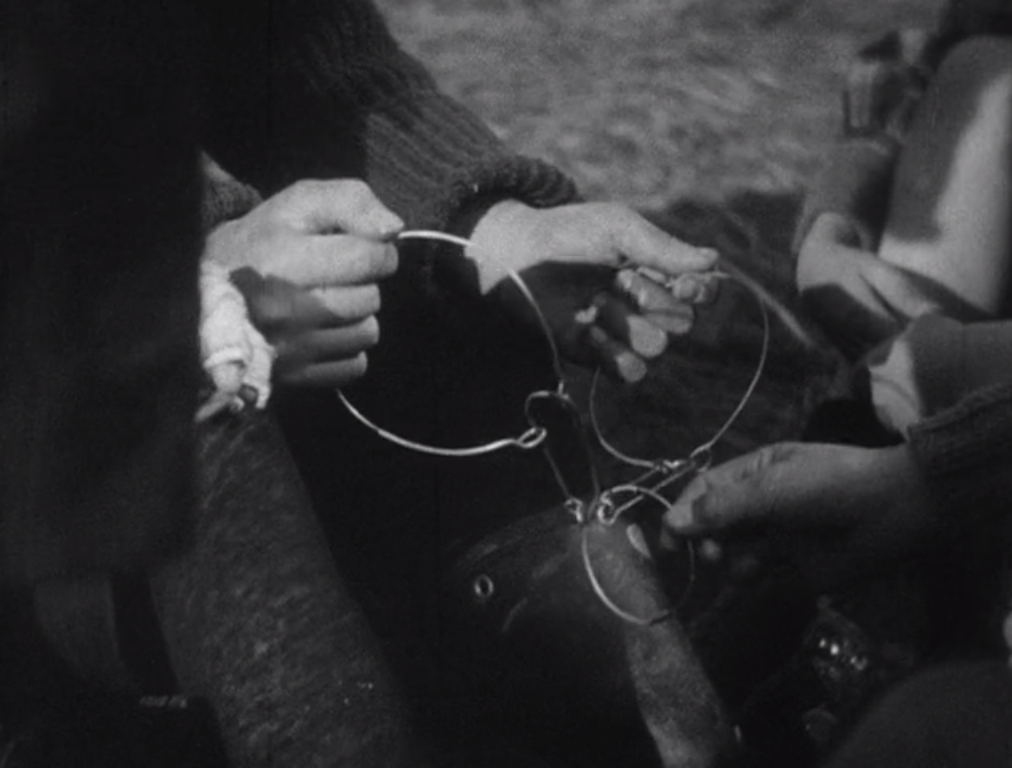
The next circles are the sparrow eggs the neighborhood boys collect from roof gutters. The gang leader Kamekichi eats these eggs, believing they give him strength, and the other boys follow his example, at least as far as collecting the eggs, although they never seem to muster the nerve to eat any. But Ryoichi and Keiji test a sparrow egg on their dog, causing its hair to fall out, and Kamekichi gets in trouble with the teacher for eating a sparrow egg in the classroom.
About halfway through the film, Kamekichi finds a valuable coin with a hole in its center. He declares that this coin will bring him good luck, but in fact it does the opposite. First, after making change, he loses the money to a policeman, and then the delivery boy bribed by Keiji roughs him up to settle the score for the two brothers.
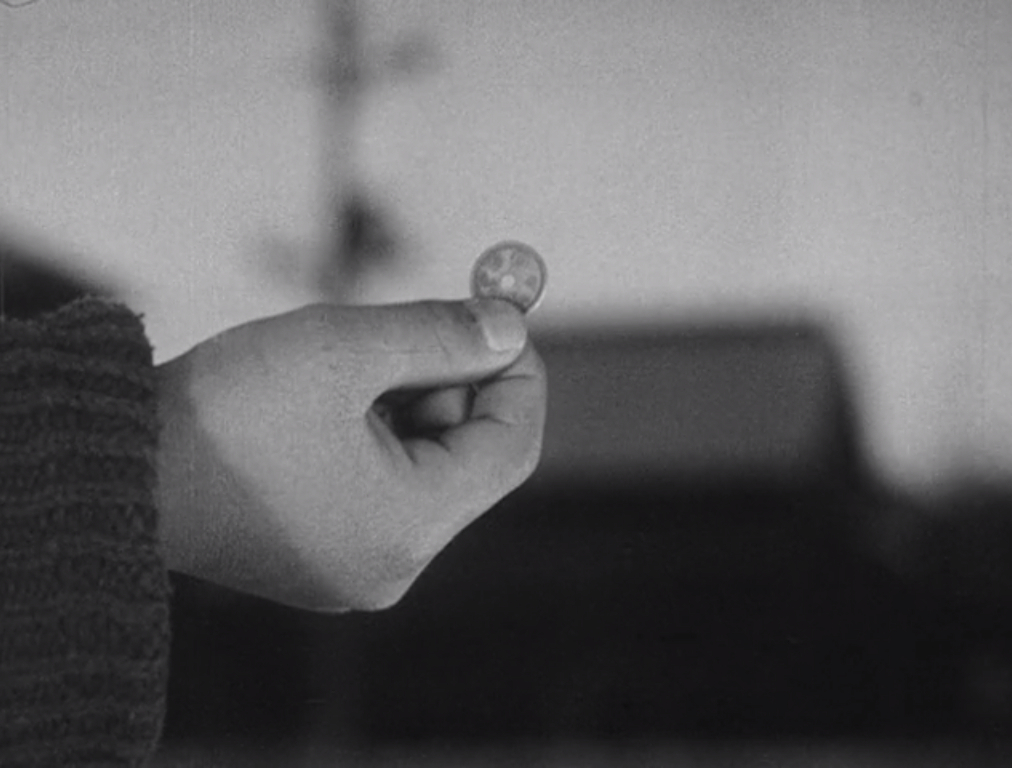
The final conflict stems from Mr. Iwasaki’s home movies, which are on circular reels. Keiji and Ryoichi watch from the back of the room with the neighborhood boys, and their father sits near the front with his colleagues. Some zebras in the first reel spark a silly argument among the boys, embarrassing their father in front of his boss. In the second reel a company employee meets a pair of geishas on the street, embarrassing him. The third reel embarrasses Keiji and Ryoichi when it shows their father clowning around in what the kids perceive to be an ingratiating manner. The last third of the film focuses on the ensuing conflict between the boys and their father.
Given the common and elemental nature of circles, it’s inevitable that other circles will intrude on the picture, muddying the pattern. There are a few bowls and dishes that don’t mean much, and characters wear round hats – although the two most prominent hats, on the boys’ father and Taro, signify a social status that’s related to the various troubles that arise. None of these, however, is photographed with as much attention as the various circles that prefigure adversity – the wheels, toys, eggs, coins, and film reels. But there is one other set of circles that absolutely breaks the pattern. Toward the end, as Keiji and Ryoichi persist in their hunger strike to protest their father’s indignity, their mother serves a tray of rice balls. These round treats tempt the boys out of their revolt, calm their offended pride, and reconcile them with their father, who pulls up a lawn chair to share the rice balls with them.
Evidently the film’s grudge against circles is not absolute; they’re good for something after all. Nevertheless, if we recall the muddy tire at the beginning, the trouble it causes is only half of the incident. It’s also freed from the rut as the father cranks the truck’s shaft and the boys push from the back. Like all of the story’s hardships it’s resolved nicely. It’s only fitting that a set of circles like the balls of rice should eventually bring everything to a happy conclusion. At last the neighborhood boys are all friends, the brothers are again proud of their father, and the younger and older generations understand each other.
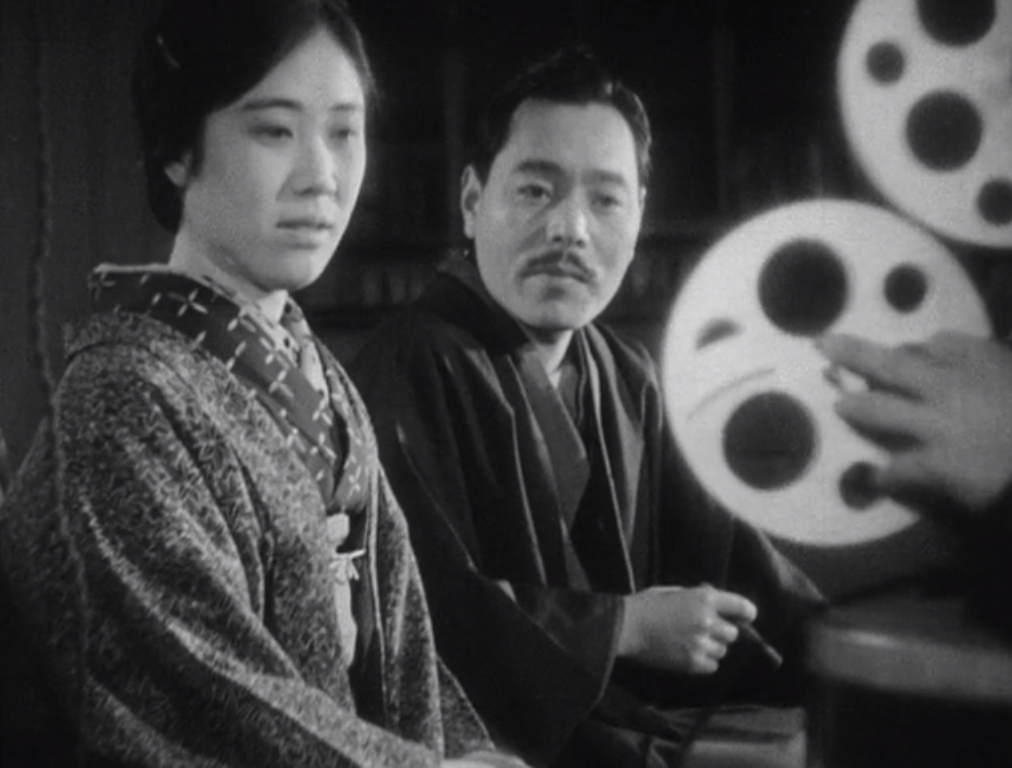
The film’s stylistic resemblance to neorealism, its bleak setting and its portrayal of class differences, can make it tempting to read it as social criticism, but the optimistic ending defeats this interpretation. Instead the movie expresses a faith in life that’s too often forgotten or overlooked amid everyday stresses and challenges. Like Ozu’s later films, the object of I Was Born, But… is to restore a perspective that can reconcile us to life’s difficulties. Its focus on children, the simplicity of its lesson, and its use of a device as basic as circles justify the first half of the full Japanese title: A Picture Book for Adults.
Already a few Ozu trademarks appear, like the exaggeratedly close pairing of two characters with matching clothes and synchronized movements. Here it’s the two brothers, Keiji and Ryoichi, whose gestures match so closely especially when showing displeasure with their father. Ozu will often recycle this device: the father and son in A Story of Floating Weeds, the two brothers in Good Morning, Akiko and Noriko in The End of Summer. The harmony of these intimate bonds expresses a faith, like the faith at the end of I Was Born, But…, that healthy relationships eventually reach an equilibrium that irons out conflicts and differences before they arise.
Another Ozu trademark is the use of trains to represent time moving forward. He’ll develop this more fully in his late films where trains are always linked to clock time, but for now they usually mark the dawning of a new day. The suburban setting is thoroughly criss-crossed by commuter railroads and telephone lines, both symbolizing modernity, but trains appear mostly in the morning as the children go to school and their father heads for the office. I Was Born, But… introduces three separate days, each with variations built around passing trains.
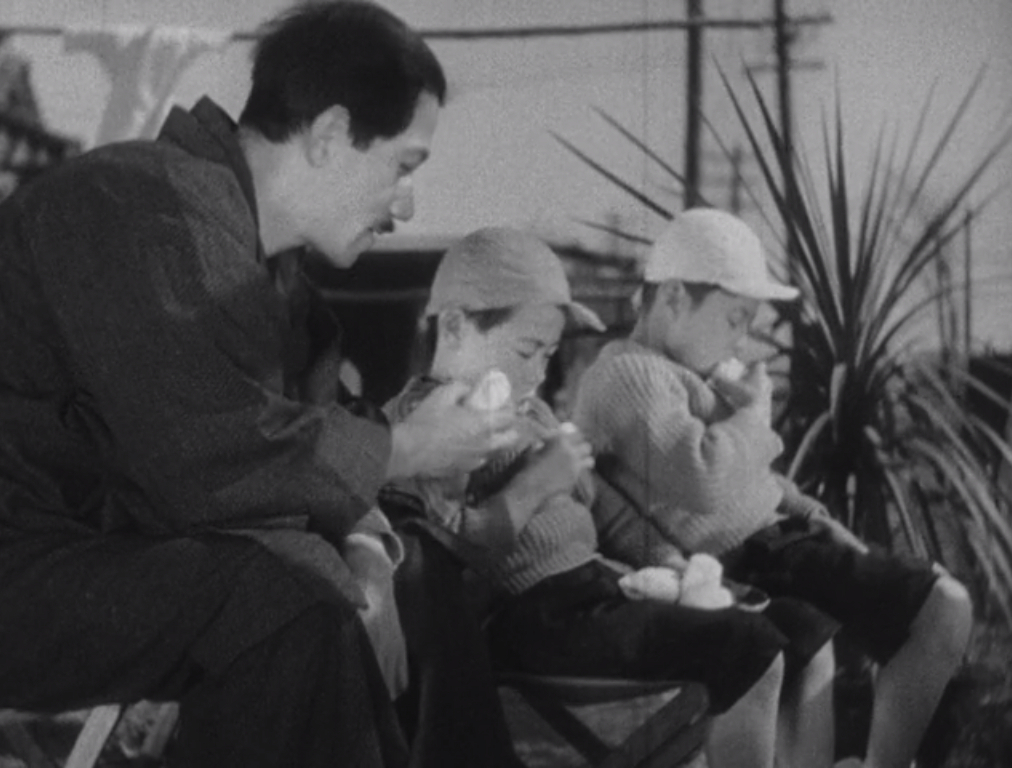
The pointed comparison between generations is also a hallmark of Ozu, and it helps the audience to look at time on a broader scale. The schoolboys’ world has its hierarchies, conflicts, and rituals just like the father’s office. An early scene contrasts school and office, cutting between them in the middle of a pan and cutting back in the middle of a reverse pan. One cut juxtaposes the boys’ energy with the tired office workers, but a similar cut later on shows the boys taking a nap. The father embarrasses the boys with his comic antics, but when Keiji wants to show independence, he too makes silly faces and poses. These comparisons build a continuum across the generational divide. Parents and children may look strange to each other, but underneath it all they are alike. As much as the world changes, there’s a constancy in the flow of time and a dependable order in the universe.
A circle is a fitting metaphor for this view of time, which is cyclical in the concrete ways that define the experience of life, if not in the abstract physical sense. Succeeding generations continue as before; the days pass with interesting variations; and problems continually arise and resolve themselves. I Was Born, But… creates a kind of rhetorical magic in which circles cause all the problems, but most of these problems are not solved by clever tricks. Rather, time itself smooths them out. Whatever the characters may do, their difficulties would eventually fade through the benevolent working of time.
CONNECTIONS:
Shadow of a Doubt – Circles as an organizing device
Good Morning – Two brothers go on strike against their parents; portrait of life in a fringe Tokyo neighborhood
Mouchette – Recurring motif of circles
Diva – Recurring motif of circles